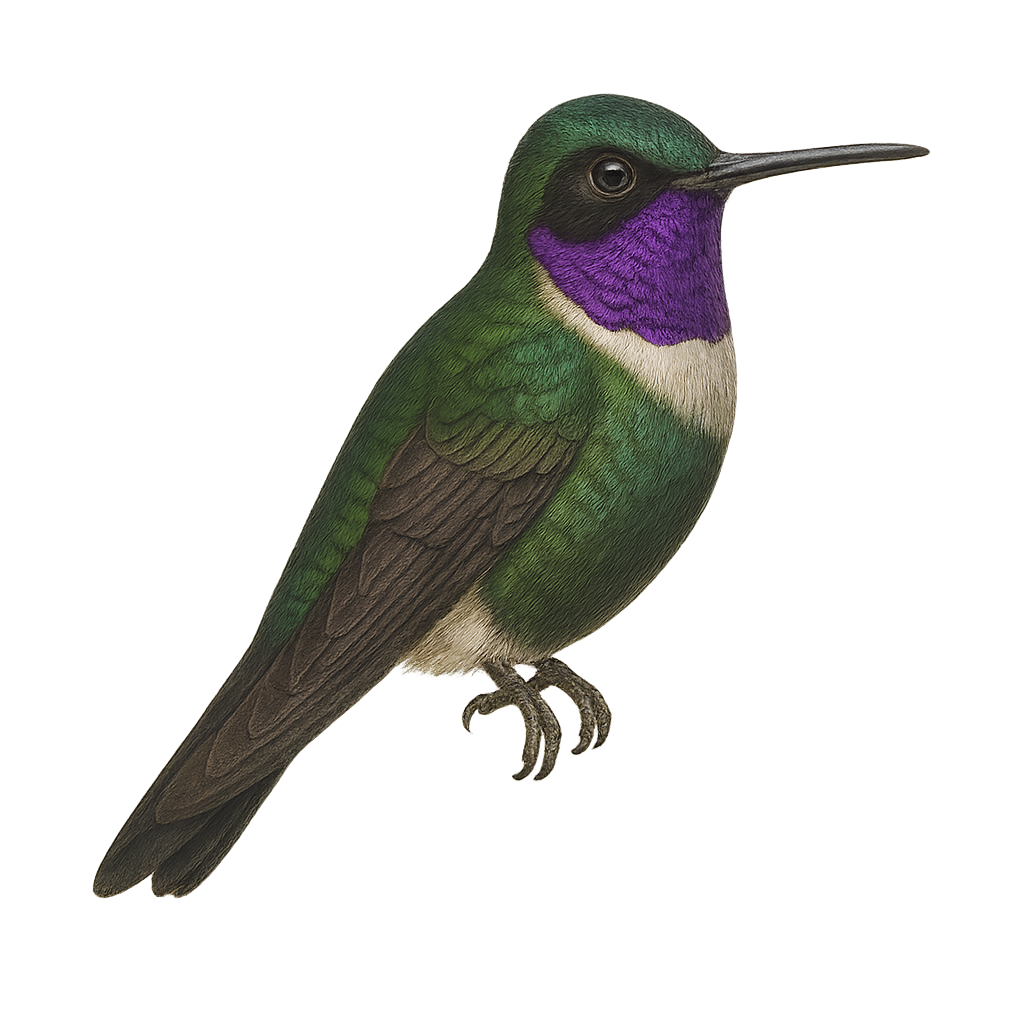Your wildlife photography guide.
Explore the amethyst-throated sunangel in detail, study its behavior, prepare your shots.
Where to observe and photograph the amethyst-throated sunangel in the wild
Learn where and when to spot the amethyst-throated sunangel in the wild, how to identify the species based on distinctive features, and what natural environments it inhabits. The WildlifePhotographer app offers tailored photography tips that reflect the amethyst-throated sunangel’s behavior, helping you capture better wildlife images. Explore the full species profile for key information including description, habitat, active periods, and approach techniques.
Amethyst-throated Sunangel
Scientific name: Heliangelus amethysticollis

IUCN Status: Least Concern
Family: TROCHILIDAE
Group: Birds
Sensitivity to human approach: Suspicious
Minimum approach distance: 5 m
Courtship display: October to December
Incubation: 15-17 jours
Hatchings: October to January
Habitat:
Humid forests, forest edges, shrublands
Activity period :
Primarily active during the day, with peak activity in the morning and late afternoon.
Identification and description:
The Heliangelus amethysticollis, or Amethyst-throated Sunangel, is a captivating small bird from the Trochilidae family. This hummingbird is distinguished by its striking violet throat, which beautifully contrasts with its metallic green plumage. It is primarily found in the humid forests of the Andes, at altitudes ranging from 1800 to 3000 meters. Its slender, slightly curved beak is perfectly adapted for feeding on flower nectar, which it gathers with remarkable agility. In addition to its nectarivorous diet, it also consumes small insects to supplement its nutrition. The Amethyst-throated Sunangel is a territorial bird, often observed vigorously defending its territory against other hummingbirds. Its breeding season generally extends from November to March, and the female builds a cup-shaped nest where she lays two eggs.
Recommended lens:
400 mm – adjust based on distance, desired framing (portrait or habitat), and approach conditions.
Photography tips:
To photograph the Amethyst-throated Sunangel, it is advisable to use a 400mm or longer lens to capture detailed images without disturbing the bird. Look for areas where flowers are abundant, as these birds are often attracted to nectar sources. Be patient and discreet, as although these hummingbirds are suspicious, they can get used to your presence if you remain still. Use a fast shutter speed to freeze the rapid movement of their wings.
The WildlifePhotographer App is coming soon!
Be the first to explore the best nature spots, track rutting seasons, log your observations, and observe more wildlife.
Already 1 431 wildlife lovers subscribed worldwide

